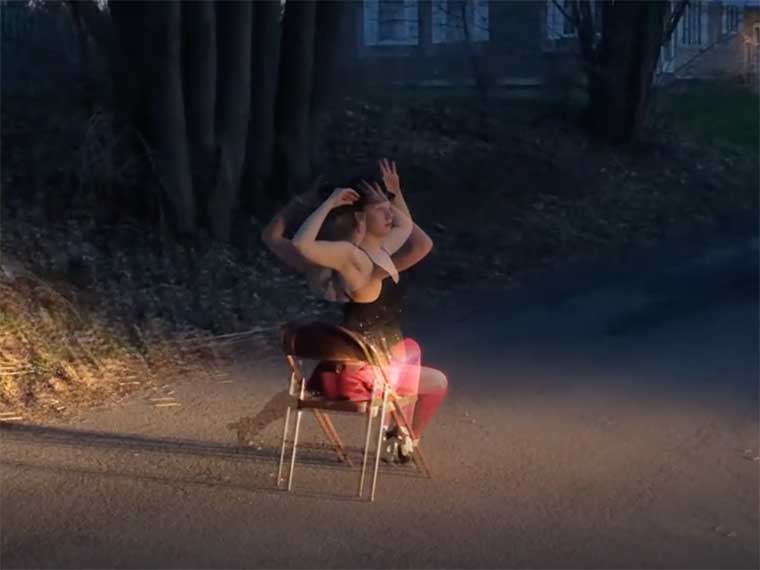
Patent Pending: Copyright in Motion
Yours/Mine
Watch on MySLC (login required)
Curated by Julie Mondrick
Performed by Corrine Alexander, Shaelyn Casey, Eleanor Cherry, India Fuchs, Julie Mondrick, Lily Padilla, Sasha Pinchuk, Ruby Stigers, N’tifafa Akoko Tete-Rosenthal, Kenia Rosete, Cici Tu, Kathleen Warner
Music by A Chorus Line (2006), Chicago (2002), Nirvana, Hairspray (2007), Technotronic
Music Edited by William Catanzaro
Costumes by Julie Mondrick and performers in consultation with Amy Page
Video Editing by Julie Mondrick in collaboration with Olana Flynn
Videography by Shawn Ano and Julie Mondrick
This thesis traces the racialized histories and gendered stereotypes of the jazz dance genre, from its inception on plantation dances through the stage performances of popular white jazz dance choreographers in America. It asks: What can a white jazz dance performer and choreographer do to acknowledge and disrupt white, male appropriations of a black vernacular form, a dynamic which has created and propagated gendered stereotypes of the form in its codification and commodification? This research explores the ways in which a white performer and choreographer was exposed to jazz dance, seeking to honor the black origins of the form, while questioning heteronormative stereotypes surrounding the female body in the commodification and legitimization of the form as it moved from the jook onto the stage. This research builds on the work of Brenda Dixon Gottschild, Anthea Kraut, and Marshall and Jean Stearns, culminating in a choreographic and written work exploring ways to use and subvert historical stereotypes, while tapping into the joy of movement at the basis of the genre. This thesis and performance has been recalculated in lieu of the pandemic, COVID-19. This pandemic displaced performers from each other and school, necessitating a new performance medium to be developed to replace what would have been the live performance. As the next this occurred, there is one thing that remains the same, dance as an ephemeral art form, jazz dance as a wide ranging and ever-evolving form, has taken a new course of action as the work was transformed and translated from an original, live, work based on togetherness into a wide-spread, version focusing on the COVID-19 motto “alone, but together.”